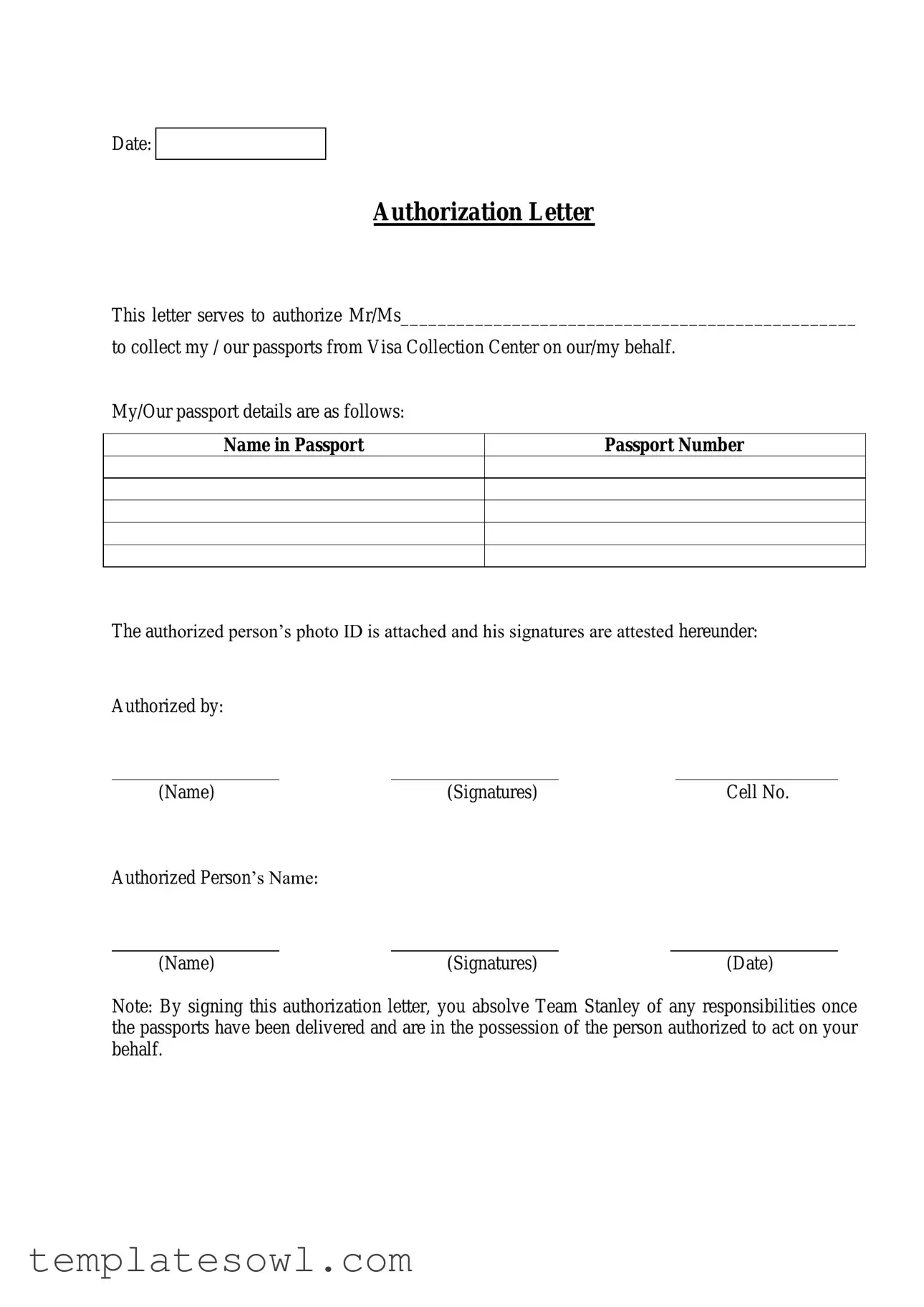Filling out an Authorization Letter form can seem straightforward, but there are common mistakes that applicants often make. One such error is not clearly filling in the name of the authorized person. It is crucial to ensure that this area is filled in legibly and completely. If there are any typos or incomplete names, it could hinder the authorized person's ability to collect the documents.
Another common mistake involves the absence or incorrect entry of passport details. The section for "Name in Passport" and "Passport Number" should be completed accurately. Failing to provide this information, or entering it incorrectly can result in confusion or denial of service at the Visa Collection Center.
Additionally, applicants frequently forget to attach a photo ID of the authorized person. This attachment is essential for identification purposes. Without it, the Visa Collection Center may not release the passports, as they require verification of the person collecting the documents.
Signatures must also be accurately provided. Often, individuals neglect to sign in the designated areas for both the authorized person and the person granting authorization. Proper signatures are important as they confirm consent and acknowledgment of responsibilities associated with the collection of passports.
Including a cell phone number is another essential yet often overlooked detail. This information allows for easy communication in case any issues arise during the collection process. Omitting this detail may lead to complications or delays in retrieving the passports.
Moreover, not understanding the implications of signing the form can be problematic. The note at the bottom states that by signing the letter, Team Stanley is absolved of responsibility. It’s vital to comprehend this statement fully to avoid misunderstandings later regarding liability.
Lastly, many people forget to check the date on the Authorization Letter. A current date is needed to ensure that the document is valid and can be acted upon. Outdated letters can lead to unnecessary complications with the collection process.
By paying attention to these details, individuals can avoid common pitfalls when filling out the Authorization Letter form. Making sure all sections are complete and accurate ensures a smoother experience in collecting passports.

